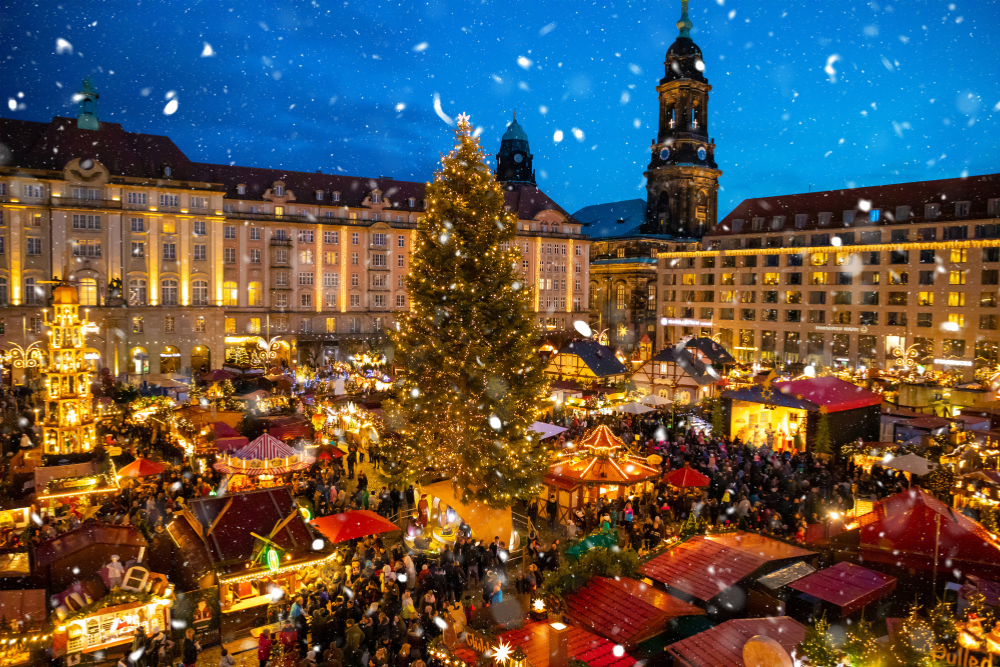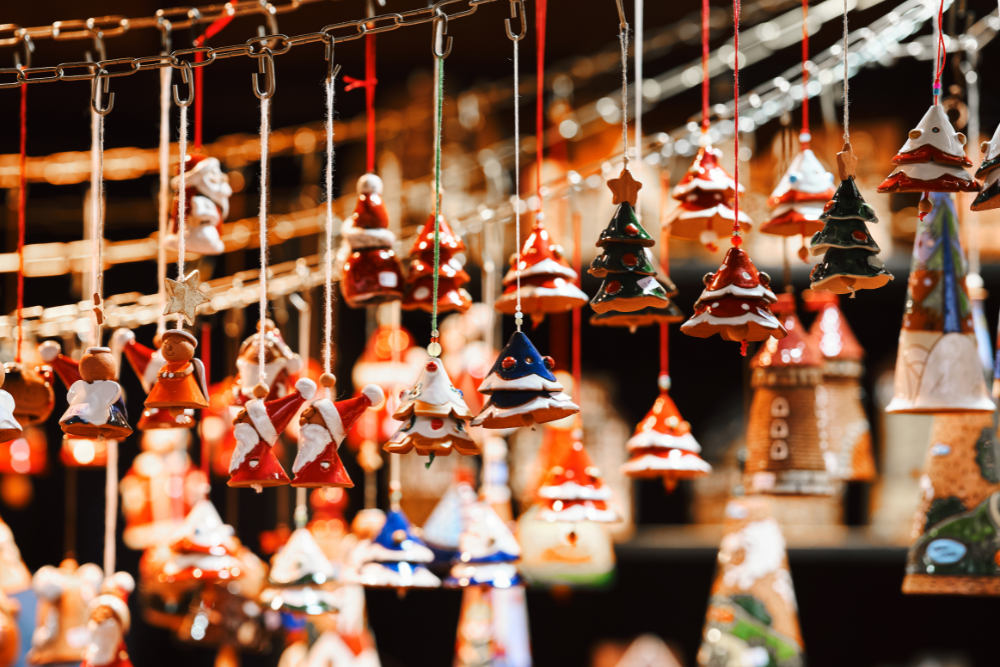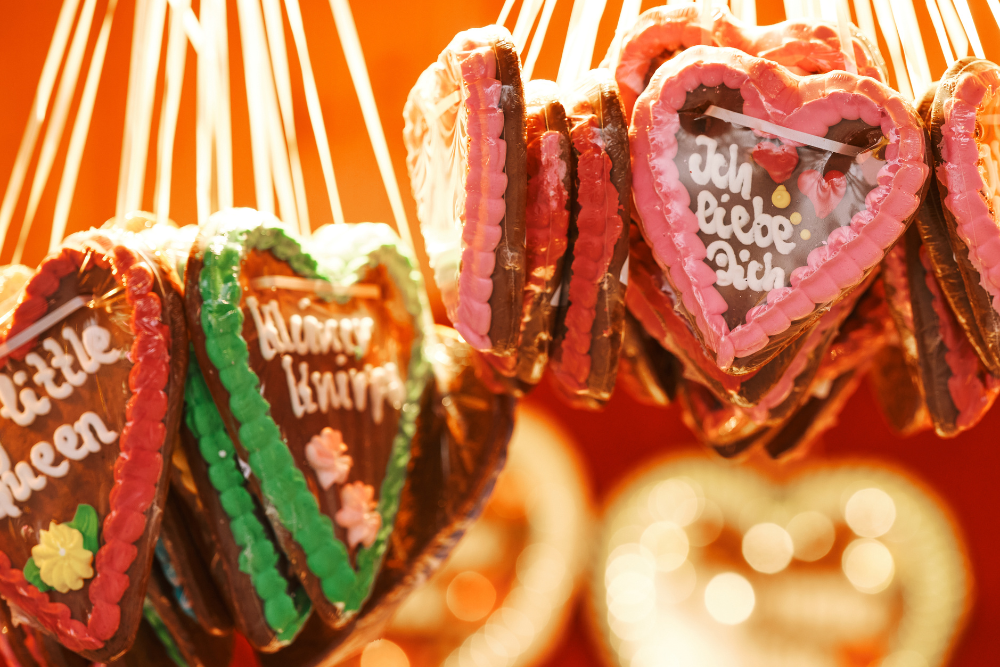Germany is widely recognized as the birthplace of many beloved Christmas traditions, and when it comes to the holiday season, the country is truly magical. With its festive atmosphere, time-honored customs, and rich cultural heritage, Germany is an ideal place to experience the warmth and joy of Christmas. From the enchanting Christmas markets to the delicious food, Germany’s holiday traditions are sure to put you in the spirit of the season. If you’re planning to celebrate Christmas like a local, here’s a guide to the best German Christmas traditions.
1. Visit the Christmas Markets (Weihnachtsmärkte)

Germany is famous for its Christmas markets, or Weihnachtsmärkte, which spring up in towns and cities across the country starting at the end of November. These markets are an essential part of the German holiday experience and offer a magical atmosphere filled with sparkling lights, delicious treats, and handcrafted goods.
- What to Expect: Stalls decorated with festive ornaments sell everything from mulled wine (Glühwein) and roasted chestnuts to intricate wooden toys, candles, and ornaments. The scent of cinnamon, gingerbread, and fir trees fills the air, creating an unforgettable festive atmosphere.
- Where to Go: Some of the best Christmas markets in Germany can be found in Nuremberg, Munich, Cologne, and Dresden. The Nuremberg Christkindlesmarkt is one of the oldest and most famous, with its medieval charm and beautiful angelic figure known as the “Christkind,” who opens the market each year. In Cologne, the Cathedral Christmas Market is set against the backdrop of the city’s stunning cathedral, making it a magical place to shop and enjoy holiday cheer.
2. Advent Calendars (Adventskalender)

Advent calendars are an important part of Christmas celebrations in Germany, and they are enjoyed by children and adults alike. Traditionally, these calendars contain 24 small doors that are opened each day, starting on December 1st and counting down to Christmas Eve. Each door hides a small gift or a chocolate treat, making the daily countdown an exciting and cherished part of the holiday season.
- Tradition: The Advent calendar is a symbol of anticipation and excitement as it marks the time leading up to Christmas. Many families will have one for each member, and they are often passed down as heirlooms or custom-made to include unique gifts.
- Fun Fact: The first Advent calendar dates back to the early 19th century in Germany, and today you can find everything from traditional paper calendars to elaborate wooden ones that feature miniature drawers.
3. Christmas Eve (Heiligabend)

In Germany, Christmas Eve (Heiligabend) is the highlight of the holiday season. While Christmas Day is often spent in a more relaxed and family-oriented way, it is on Christmas Eve that the majority of the festive celebrations take place. This is the night when families gather together for dinner, exchange gifts, and enjoy each other’s company.
- Traditional Dinner: The Christmas Eve meal in Germany often includes fish or Sausages as a lighter option, followed by potato salad and Wiener Würstchen (a type of sausage). In some regions, a festive roast goose or duck might be served as the centerpiece of the dinner.
- Gift-Giving: In Germany, gifts are traditionally exchanged on Christmas Eve, usually after a festive meal. Children anxiously await the arrival of the Christkind (Christ Child) who is believed to deliver the gifts. This adds an element of magic and anticipation to the evening.
4. The Christmas Tree (Weihnachtsbaum)

No German Christmas is complete without a beautifully decorated Weihnachtsbaum. While Christmas trees are enjoyed worldwide, in Germany, the tradition of decorating the tree is especially cherished.
- Tradition: The Christmas tree is typically brought into the house on Christmas Eve and decorated just before the festivities begin. Decorations include candles (real or electric), glass baubles, tinsel, and homemade ornaments. Many families also hang edible treats such as gingerbread cookies, nuts, or dried fruit on the tree.
- Symbolism: The Christmas tree has its origins in Germany, dating back to the 16th century, and it remains one of the most important symbols of Christmas in the country.
5. St. Nicholas Day (Nikolaustag)

St. Nicholas Day is celebrated on December 6th and is a major tradition in Germany, especially for children. According to legend, St. Nicholas would visit children the night before his feast day to reward them for being good. In modern times, children still look forward to this day, leaving their shoes out the night before in the hope that St. Nicholas will fill them with small gifts and treats.
- Tradition: On December 6th, children wake up to find chocolates, sweets, and small toys in their shoes. In some regions of Germany, St. Nicholas is also accompanied by Knecht Ruprecht, a figure who warns children who have misbehaved, providing a more playful side to the tradition.
- Fun Fact: St. Nicholas Day serves as an early start to the holiday season, with festive activities leading up to Christmas Eve.
Conclusion

Germany’s Christmas traditions are filled with joy, warmth, and a sense of community. From the twinkling lights of the Weihnachtsmärkte to the excitement of St. Nicholas Day, celebrating Christmas in Germany is an unforgettable experience. Whether you’re indulging in Lebkuchen, enjoying Glühwein at a Christmas market, or gathering around the Weihnachtsbaum with family, the country’s time-honored traditions make it the ultimate destination for a festive holiday experience. If you want to celebrate Christmas like a local, Germany offers the perfect setting for an enchanting, cozy, and unforgettable holiday season.












